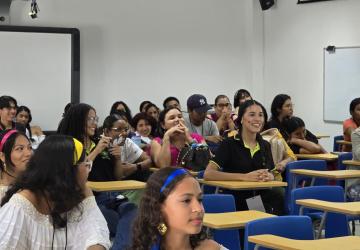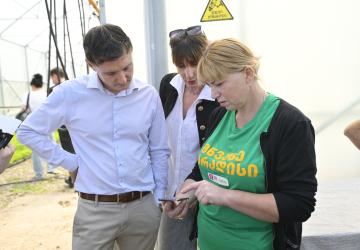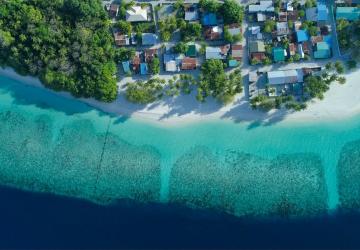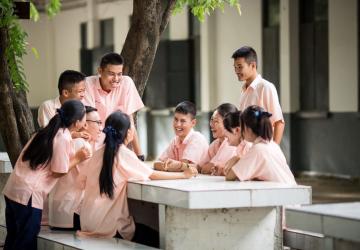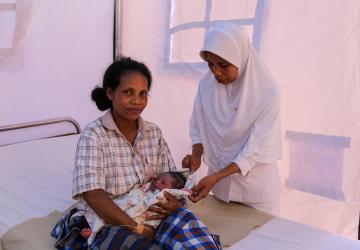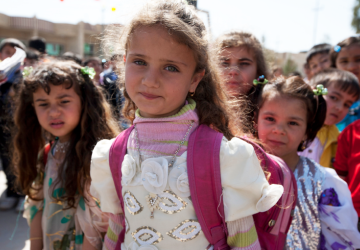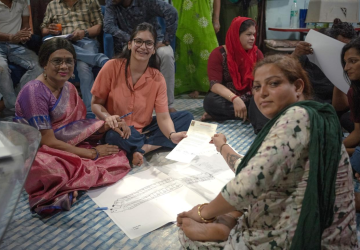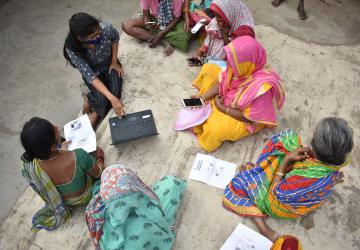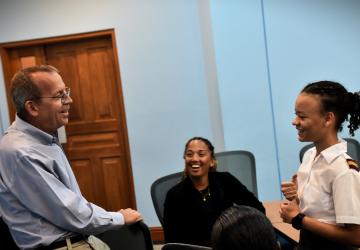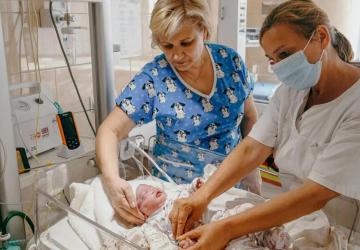From recovery to resilience: The volcanic eruption in Saint Vincent and the Grenadines two years on
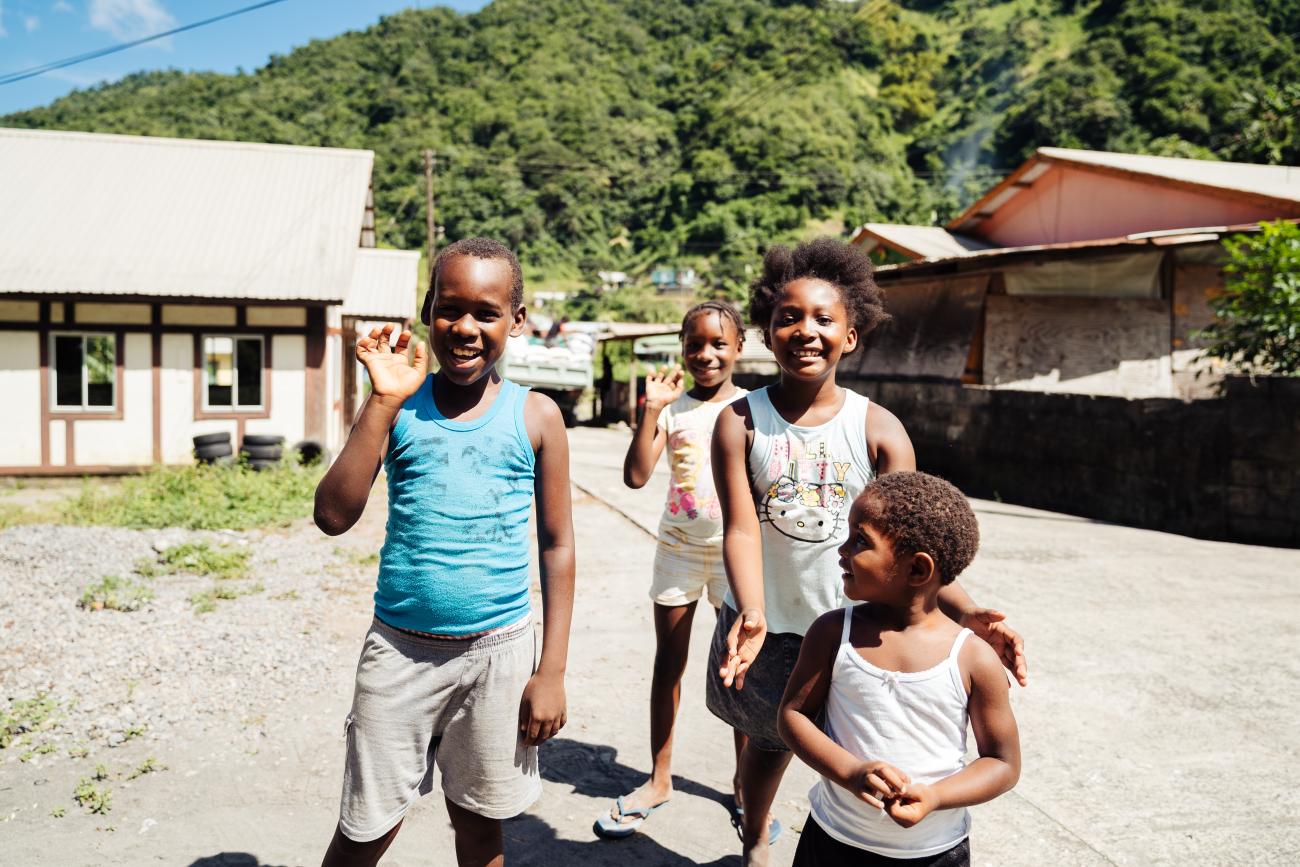
On the morning of 9th of April 2021, the La Soufrière Volcano on the main island of St. Vincent and the Grenadines erupted -filling the sky with ash and transforming the lives, livelihoods and landscape of this small Southern Caribbean nation.
The effects of the eruption were immediate. More than 22,000 people were displaced from their homes, buildings including schools and businesses were damaged, livestock was destroyed and almost an entire population was cut off from clean drinking water and other basic necessities for five months. In total the damage amounted to more than $ 234 million; the impact of which was felt well beyond the main island to communities across the archipelago.
Two years later, the ash from La Soufrière has settled, but the aftermath of the eruption continues to shape ordinary life and the development trajectory of this Small Island Developing State. For our UN country team in St. Vincent and the Grenadines, it also changed the way we work in the face of increasingly frequent crises.
Reflecting on the response and recovery efforts since, there are many lessons to be learned:
1. Disaster response cannot be separated from long-term development planning:
Faced with the unprecedented scale of disruption, the response of our UN team in the Multi-country office for Barbados and the Eastern Caribbean, was swift and comprehensive. Within less than 24 hours, a team including myself and the heads of WFP and UNICEF, disaster management experts and other emergency teams were deployed to support the initial humanitarian response.
Soon after, I joined the Prime Minister in launching a UN Global Funding Appeal to raise the funds to support the Government meet the basic needs of over 100, 000 people. Thanks to the $1 million immediately released from the Central Emergency Response Fund (CERF) and funding from other donors, we were able to launch lifesaving response efforts with a focus on WASH, health, food security, education, health, logistics, protection, and shelter.
At the same time as these emergency interventions, we developed a Country Implementation Plan; which aligned emergency response with long-term recovery and development planning, including job creation and inclusive growth. By taking this holistic approach, St. Vincent and the Grenadines was able to address early recovery and rehabilitation as well as prepare for social and economic shocks in the future.
2. Small Island Developing States face specific challenges and vulnerabilities in crises settings
The eruption of La Soufrière Volcano not only demonstrated the risks of living in a hazard prone region like the Southern Caribbean, but also laid bare the complex set of vulnerabilities common to many Small Island Developing States (SIDS).
From its small size, remote location, undiversified economy and exposure to climate-related shocks, St. Vincent and the Grenadines faced a specific set of structural challenges which made the impact of the eruption all the more acute. At the time of the disaster, the country was also dealing with the ongoing effects of COVID-19 pandemic on the health sector and tourism industry, and was responding to a concurrent dengue outbreak.
Understanding the nature of these vulnerabilities and how they relate to one another was key to designing an effective UN response. As part of these efforts, UN agencies with a presence in the country expanded and adapted their services quickly to provide tailored assistance. PAHO and WHO for example, were able to expand their programmes to ensure access to quality health services in the immediate aftermath of the volcanic eruption while continuing to support the country respond to the COVID-19 pandemic.
In addition to this, we also set up a specific coordination structure to facilitate joint needs assessments and collective response strategies to tackle issues together.
3. Community resilience is everything
From social protection to livelihoods to education, we recognized that community resilience was key to St. Vincent and the Grenadines being more prepared to bounce back from future shocks.
Following the eruption, we worked with the Government to expand the Social Protection System, including supplying 1400 households with cash transfers which were linked to social empowerment programmes.
A post-disaster needs assessment undertaken by our UN team and partners also helped us better understand the social and economic impacts of the eruption on communities across the islands. From this we were able to design specific, people focused interventions to help strengthen agriculture value chains, digitize national statistics, and provide focused support to the education system.
Two years on, our roadmap towards a people-centered, resilient recovery is still ongoing. On the issue of food security for example, a Joint UN Programme implemented by FAO and WFP is working to build resilient livelihoods among farmers, fishers and vulnerable households by linking social protection to agriculture through data, information system and the adoption of more inclusive risk management practices.
Ready for an uncertain the future
Two years after the devastating volcanic eruption, communities across St. Vincent and the Grenadines are continuing to rebuild their lives and move steadily towards a resilient, long-term recovery.
Just as it up-ended livelihoods, the eruption also forced us to adapt the way we work and put the need for stronger community resilience and disaster risk management into sharp focus.
For St. Vincent and the Grenadines, like other Small Island Developing States, implementing these adaptations will become more important as the threat of shocks and climate related crises grow.
Although we don’t know what crises lie ahead, together with communities and partners across St. Vincent and the Grenadines, our UN country team is ready for them.
This blog was written by Resident Coordinator for the Multi-country Office in Barbados and the Eastern Caribbean Didier Trebucq, with editorial support from UNDCO. To learn more about the work of the UN in St. Vincent and the Grenadines, click here.


